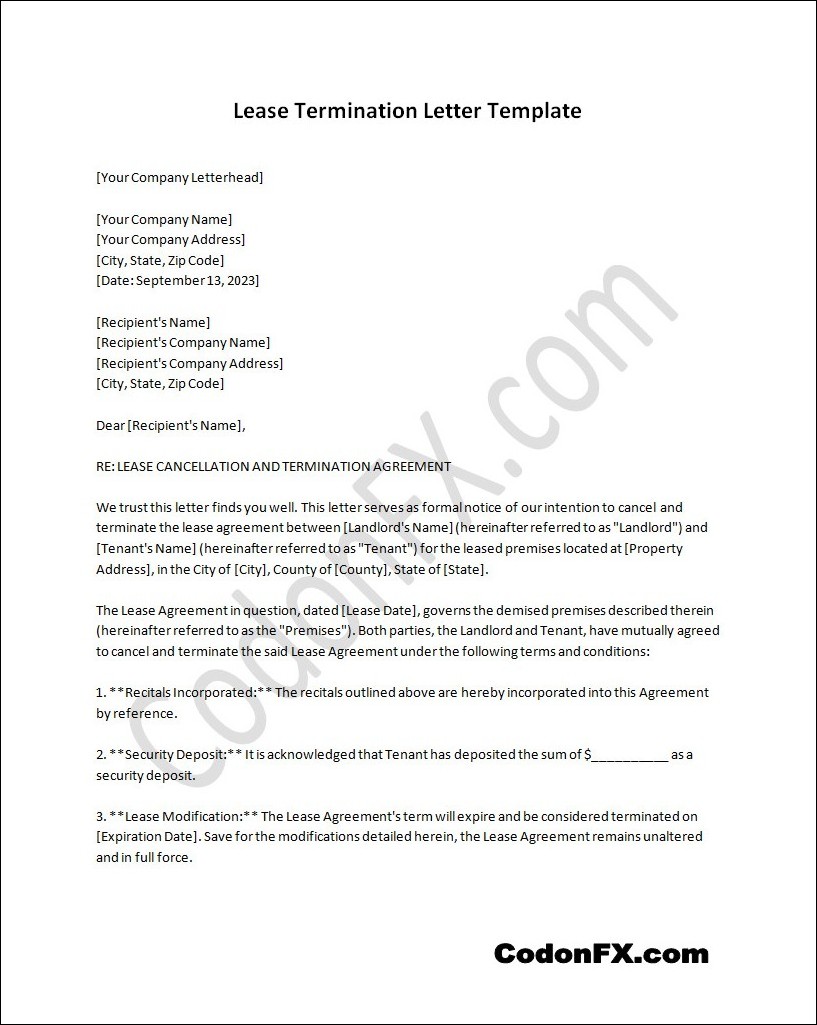
What is a lease termination letter?
A lease termination letter is a formal document that is written by a tenant to their landlord to officially communicate their intention to end the lease agreement. It serves as a legal notice and provides a written record of the tenant’s decision to terminate the lease. The purpose of a lease termination letter is to ensure that both parties are aware of the termination date and any obligations or responsibilities that need to be fulfilled before the lease ends.
One of the primary benefits of a lease termination letter is that it helps to protect the rights and interests of both the tenant and the landlord. By providing a written notice, the tenant can avoid any misunderstandings or disputes regarding the termination of the lease. Similarly, the landlord can use the letter to start the process of finding a new tenant and making necessary arrangements for the end of the lease. Additionally, a lease termination letter can also be used as evidence in case of any legal proceedings or disputes that may arise in the future.
Furthermore, a lease termination letter also helps to ensure a smooth transition for both parties involved. It allows the tenant to communicate any specific reasons for ending the lease, such as relocation, financial constraints, or dissatisfaction with the property. This information can be helpful for the landlord in understanding the tenant’s perspective and making improvements to the property or addressing any issues for future tenants.
The most common situations for lease termination
When it comes to leasing agreements, there are several situations that may lead to lease termination:
- Expired lease: One of the most straightforward situations for lease termination is when the lease agreement has reached its expiration date. Once the lease term is over, both the landlord and the tenant have the option to renew the lease or terminate it. It is important to review the terms of the lease agreement to determine any notice periods or requirements for termination in such cases.
- Non-payment of rent: When a tenant fails to pay rent, it can be grounds for lease termination. Landlords typically have the right to terminate the lease if rent is not paid within a certain period of time, as specified in the lease agreement. However, laws regarding eviction and termination for non-payment of rent can vary, so it’s crucial to consult local regulations and follow the proper legal procedures.
- Violation of lease terms: If a tenant violates any terms of the lease agreement, such as subletting without permission or causing significant damage to the property, it may provide grounds for lease termination. Landlords can terminate the lease if the tenant fails to rectify the violation within a specified period of time. It’s essential to document any violations and communicate clearly with the tenant to ensure a fair and legal termination process.
Landlords and tenants should familiarize themselves with the terms of the lease agreement and local regulations to handle lease terminations properly. By understanding these common situations, both parties can protect their rights and interests while maintaining a respectful and lawful relationship.
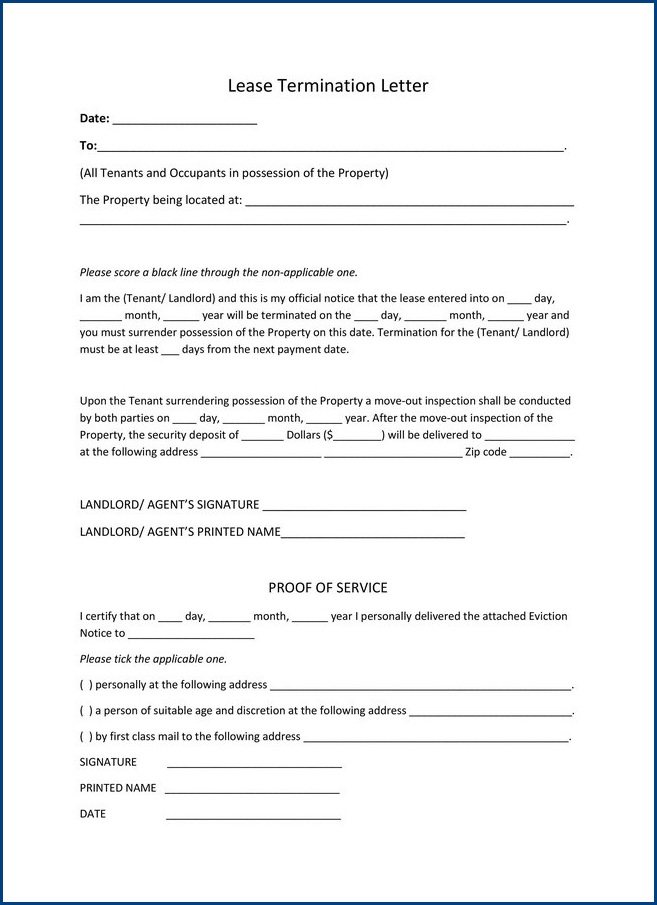
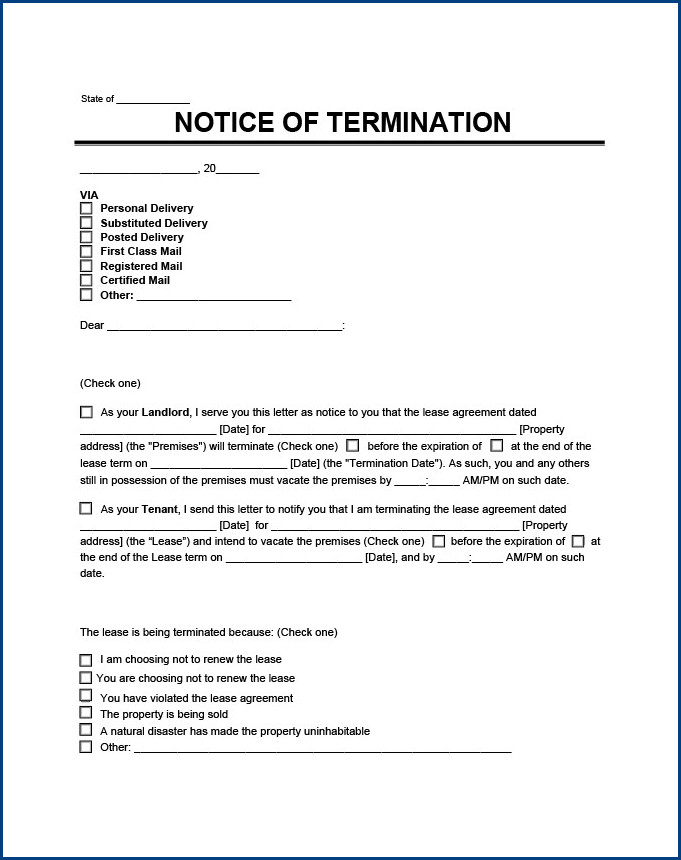
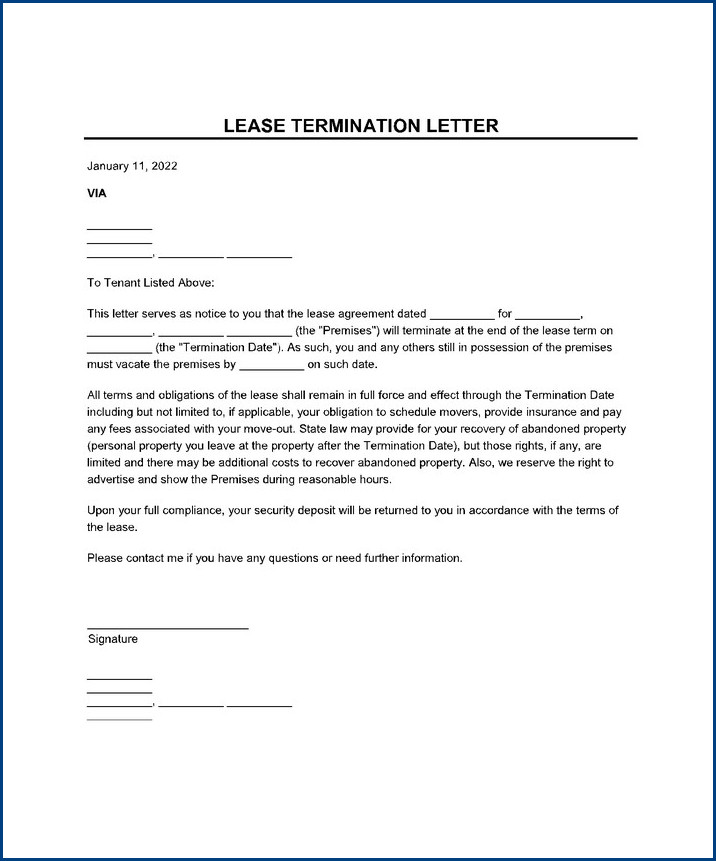
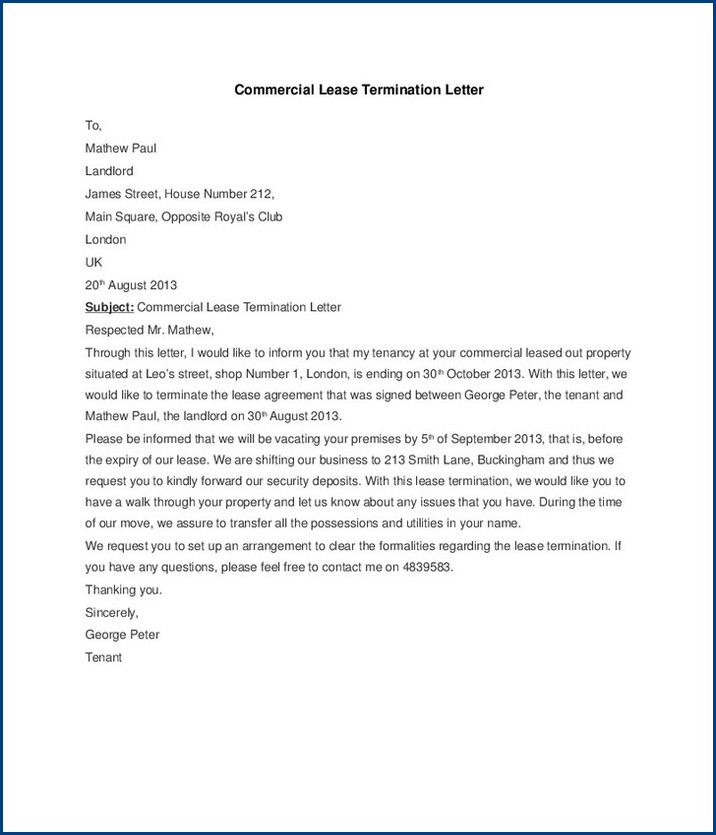
How to write a lease termination letter
Writing a lease termination letter is an important step to formally end your lease agreement. Whether you are a landlord or a tenant, it is crucial to follow the proper procedure to ensure a smooth transition. Here are the essential steps to consider when writing a lease termination letter:
- Include the date and contact information: Begin the letter by including the current date and your contact information at the top. This will help identify the sender and provide a reference for future correspondence.
- Address the recipient: Clearly state the recipient’s name, address, and any other relevant details such as their role as a landlord or tenant. This will ensure that the letter reaches the intended recipient.
- State the purpose of the letter: Clearly and concisely state that the letter is a lease termination notice. Specify the lease agreement’s details, including the address of the property and the lease start and end dates, to avoid any confusion.
- Provide the termination date: Clearly state the date on which the lease will terminate. This should comply with the notice period specified in the lease agreement or local rental laws. It is essential to adhere to these requirements to avoid potential legal issues.
- Express the reason for termination: While it is not always necessary to provide a reason for terminating the lease, it can be helpful to include a brief explanation. Whether it is due to relocation, financial constraints, or any other circumstances, be honest and concise.
- Request a move-out inspection: If you are the tenant, it is recommended to request a move-out inspection to ensure that you are not held responsible for any pre-existing damages. This can be mentioned in the letter to facilitate a smooth transition.
- Express appreciation and provide a forwarding address: Show gratitude towards the recipient for their cooperation during the lease period. Additionally, provide your new forwarding address to ensure that any remaining correspondence or security deposit is appropriately handled.
- End the letter with a formal closing: Conclude the lease termination letter with a formal closing, such as “Sincerely” or “Best regards,” followed by your full name and signature. Make sure to keep a copy of the letter for your records.
By following these steps and including all the necessary information, you can effectively communicate your intent to terminate the lease and ensure a smooth transition for both parties involved.
Lease Termination Letter Template | Word – Download